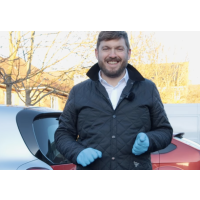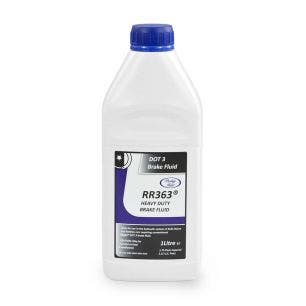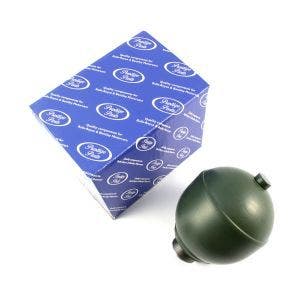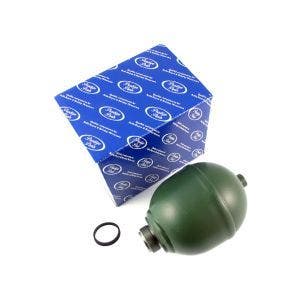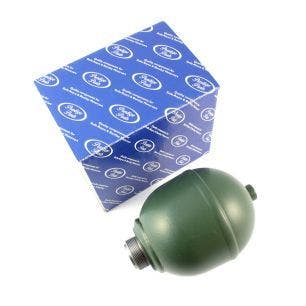Hydraulic Spheres in Rolls-Royce & Bentley: Mineral Oil Systems Decoded
Specialists, enthusiasts and owners... join us in unpacking the complexities of hydraulic spheres integral to the classic Rolls-Royce and Bentley cars with mineral oil systems.
Transitioning to Mineral Oil: The Backstory
In 1980, a significant shift occurred. Rolls-Royce & Bentley moved away from the RR363 Brake Fluid system, adopting mineral oil hydraulics. This change accompanied the debut of the Rolls-Royce Silver Spirit, Bentley Mulsanne, Corniche, and Bentley Continental.
The Intricacies of the Brake Accumulator Sphere (CD6000GMF)
Central to this hydraulic shift is the Brake Accumulator sphere CD6000GMF. Analogous to a 'pressure reservoir', it harbours pressure essential for the hydraulic system. Operating with a diaphragm inside and high-pressure gas on one flank, it mirrors the functionality of the Silver Shadow's sphere. However, a critical distinction exists: pressure levels. These spheres maintain a pressure range between 900 to 1000 psi. And while superficial resemblances to the Citroen setup exist, direct replacements are ill-advised due to differing pressures.
GMF1106 Rear Gas Springs: Functionality & Features
The GMF1106 is uniquely tailored for rear gas springs, seating itself above the rear suspension struts. Unlike the Silver Shadow with a separate damper and ram system, the mineral oil vehicles utilize a hydraulic ram that concurrently serves as the suspension damper. Herein lies the genius: this hydraulic pressure, in concert with the diaphragm, acts as an actual spring.
However, caution is paramount. This sphere operates under significantly higher pressures than the CD6000GMF. Interchanging between the early and later spheres won't skew performance, but precision with the O-ring (part number GMF1039) during installation is non-negotiable. Misplacements can lead to high-pressure fluid leakage.
Installation Nuances
Installing these spheres, especially within the boot/trunk region, demands meticulous care. Harsh removal tactics, like air chisels, risk damaging other crucial parts, such as the valve body. Unlike the Silver Shadow spheres that are open to dismantling and rebuilding, these are permanently sealed.
Choose Prestige Parts® for Authenticity
Mechanical excellence deserves quality components. Source your accumulator spheres exclusively from Prestige Parts® to maintain the integrity and performance of your classic Rolls-Royce or Bentley.
Engage Directly with Our Expertise
Queries or need more technical info? Explore our video guide featuring Matt for a hands-on walk-through. Drop a comment, and our knowledgeable team is here to help: sales@introcar.com.
Parts & Availability
| Part Number | Description | Application | Price | Availability | Link |
| RR363L1 | Brake Fluid | Rolls-Royce and Bentley models up to 1980 with a metal reservoir up to chassis 50000 | £20.42 | Available | Buy Now |
| CD6000GMF | Brake Accumulator Sphere (& o-ring) | All Rolls-Royce & Bentley models from 1980 to 1998 with chassis 1001 onwards | £73.50 | Available | Buy Now |
| GMF1106 | Rear Brake Accumulator Sphere (& o-ring) | All Rolls-Royce & Bentley models from 1982 to 1998 with chassis 6970 onwards | £89.00 | Available | Buy Now |
| GMF1039 | Rear Gas Sphere | Rolls-Royce Silver Spirit & Silver Spur & Bentley Mulsanne & Turbo | £89.00 | Available | Buy Now |
Full Video Transcript
Today we are looking at hydraulic spheres again. Previously we have looked at the Rolls-Royce Silver Shadow spheres that take the RR363 Brake Fluid. In 1980 Rolls Royce & Bentley introduced the Mineral Oil Hydraulic System. They change from using RR363 and instead began to use a mineral oil. That was with the introduction of the Rolls Royce Silver Spirit and the Bentley Mulsanne, also the Corniche and the Bentley Continental.
It uses the same principle as the hydraulic sphere.. this is the Brake Accumulator sphere CD6000GMF. It does the same job as the sphere on the Rolls-Royce Silver Shadow where there is a diaphragm inside, high pressure gas on one side and that stores pressure when you start pumping fluid into it.
So that's the battery of pressures, the reserve of pressure for the hydraulic system. There are two of these systems: you have the two brake pumps; the two valve bodies; two spheres, obviously the valve body is different. This is more like a standard Citroen setup but the pressures are different in the sphere. You can't just go and buy a Citroen sphere and bolt it on because you won't get the right flick-up pressure in the system. These are about a 1000 psi which is the same as the Silver Shadow ones, or 900+.
This is the GMF1106 for the rear gas springs. These screw in above the rear suspension struts and they do a completely different job. The way the height control works on the mineral oil cars is that they have a hydraulic ram which is also your suspension damper and unlike the Rolls-Royce Silver Shadow where they have a normal damper and then a ram above it, which actually lifted the suspension separately, these have the damper which is hydraulically pressurised to give you a different height. So above the damper, if you obviously just had that damper with pressurised oil in it the suspension is just going to lock up, but what this allows for is that pressure is actually acting on the diaphragm so this is an actual spring.
This screws into the valve body on top of the damper and when the suspension goes up and you push the telescopic damper up, it pushes the fluid into this and against the pressure behind the diaphragm. It's got a completely different pressure to the CD6000GMF. This is a much higher pressure and I think if you were to put one of these in place, the suspension is just going to go solid because it won't to be able to move the pressure inside the sphere. There are actually two different types: an early and a late sphere. They change them in the different models but you can actually interchange them, there is no real difference in pressure. This o-ring is part number GMF1039 and both of these take this same O ring. They screw in and the fitting is the same. So this sits in a recess inside the valve body.
When you fit this what you can risk doing is actually you get it near the end and the O ring will just slip out of the recess, as it's quite a shallow recess, and then instead of compressing the O ring you'll actually pinch it and then high pressure fluid is just going to pour out. So these ones are a little harder to fit because they are up in the boot / trunk so you have to take the boot / trunk trim out and gain access to them that way.
You will need to de-pressurise the system before you touch them, but then when you are spinning this on you can get them in. You just have got to remain careful that you don't misplace the o-ring as you screw it back up. You can usually get them off with a pair of big plumbers grips, but if they are tight sometimes people air chisel them off but then you risk damaging other parts on the car; eg. the valve body. But apart from that, these are just straight forward and replaceable. You can throw them in the bin or recycle them. But they are not something that you can actually overhaul, there is no diaphragm you can get there as you can see. They are welded shut and permanently capped off, not like the Silver Shadow one that you can dismantle and rebuild.

